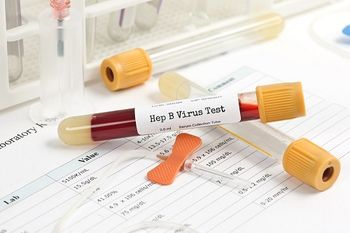
Epidemic Intelligence Service officers from the Centers for Diseases Control and Prevention recently released research revealing that cases of Q Fever may be underreported in the United States.

Epidemic Intelligence Service officers from the Centers for Diseases Control and Prevention recently released research revealing that cases of Q Fever may be underreported in the United States.

The results of a recent study reveal a high prevalence of colonization of multidrug-resistant gram-negative bacteria in nursing home residents, emphasizing the need to enhance infection control and prevention in these institutions.

Despite the best intentions, hospital accreditation surveys have become a breeding ground for low expectations.

The rates of primary and secondary syphilis in the United States have increased by 19% from 2014 to 2015, and the CDC notes that preliminary data suggests that there was a “similar rate of increase in the first 6 months of 2016.”

In certain locations in China, it’s now as easy to purchase an HIV test kit as it is a snack. But are rapid HIV self-tests the next big thing, or a big bust?

The Centers for Disease Control and Prevention (CDC) just released new guidelines on community-based pandemic prevention.

A shift in materials used in developing shaving brushes in the United States and England during WWI may have resulted in an increase in anthrax cases.

This week’s Public Health News Watch captures the all-too-common story of TJ, an American who brings his ailing mother across the border into Mexico for healthcare that he is otherwise unable to afford at home.

In a collaborative effort, scientists from Johns Hopkins School of Medicine and George Washington University have found that defective HIV proviruses can complicate monitoring the true viral load within patients and distract the immune system from attacking the functional virus.

Researchers may have discovered a way to prevent Zika, Dengue and Chikungunya viruses from replicating in human cells.

A study using the Taiwan National Health Insurance research database investigated the efficacy of statin use on preventing the development of liver decompensation in patients with different cirrhosis etiologies.

Many women who are infected with hepatitis B (HBV) during pregnancy go untreated, leaving their offspring at risk for a chronic HBV infection.

The NIH has developed a platform called SHERLOCK, capable of quickly detecting small amounts of nucleic acid sequences—and it’s cheap.

Could a power law be used to predict food-borne outbreaks and thus help public health agencies better prepare?

Researchers from Rutgers University have identified a group of compounds that may stop tuberculosis from becoming drug-resistant.

Researchers from Zhejiang University in China take a closer look at how the incidence of different infectious diseases have changed in the first decade after the SARS outbreak.

In case you missed them, here are our top 5 articles for the week of April 23, 2017.

Not much is known about how the genetic makeup of the virus impacts infected individuals, at least, until now.

We are adding 2 more reasons to the 7 reasons we are more at risk than ever for a global pandemic.

In a recent study, scientists from the NIH identify a set of protein complexes that are recruited viral genes and stimulate not only initial HSV infection, but also reactivation of dormant HSV.

More comprehensive molecular and genetic sequencing could help link cases to each other and alert authorities to HIV “clusters” that otherwise might be missed.

Manufacturing issues have led to a shortage of the only yellow fever vaccine licensed in the United States; now, that shortage is expected to lead to a complete depletion of available vaccine by mid-2017.

In underserved nations where HIV rates are high, rapid diagnostic tests (RDTs) have been relied upon to determine which individuals are infected; however, there is concern about the accuracy of these tests.

The University of Iowa experienced a large mumps outbreak last year, despite almost 100% adherence to 2-dose measles, mumps, rubella (MMR) vaccine schedule, which begs the question, is it time to start recommending a 3-dose schedule?

Using a model implemented in Europe in 2013 to estimate HAI prevalence by the European Centre for Disease Prevention and Control (ECDC), Nicola Thompson, PhD, CDC, and her team estimated the national burden of HAIs in US nursing homes. In their poster, Dr. Thompson and her colleagues reported preliminary data from their pilot study.

The CDC offers insight into why a rare exception to the general recommendation of either brand of MenB vaccine had been made for the Rutgers outbreak in 2016.

While widespread and regional flu continue to decline in the United States, a new study examines how flu vaccine effectiveness and uptake can be improved.

Do some healthcare-associated infections receive more attention at your institution than others? Has your institution committed to using single-use medical devices to stave off infections? The editorial staff at Contagion® wants your feedback. Please take this brief survey to weigh-in.

This week’s Public Health News Watch shifts the focus towards pop culture as a Grammy award winner, and one of the foremost activists for the HIV/AIDS crisis has been taken ill with what news outlets are reporting as a “rare and potentially deadly bacterial infection.”